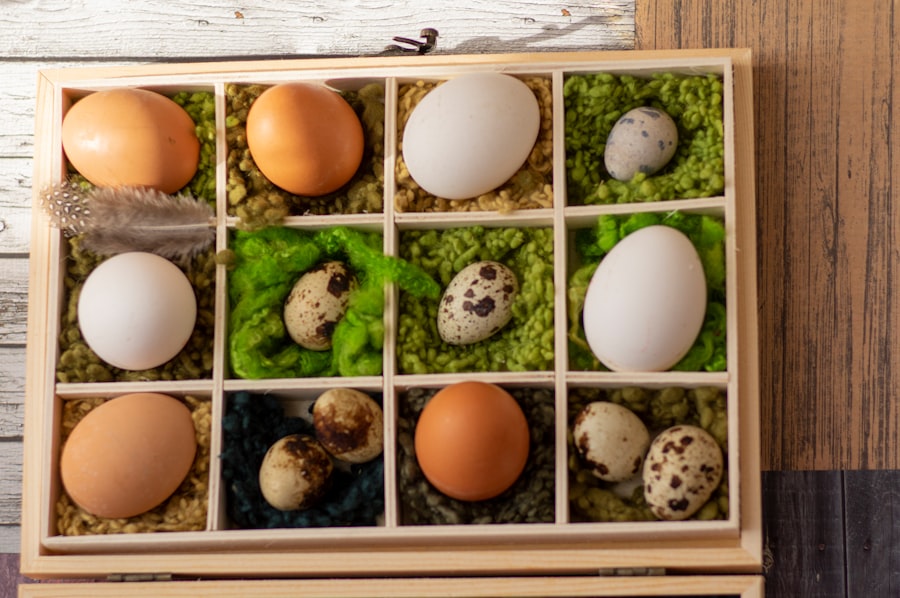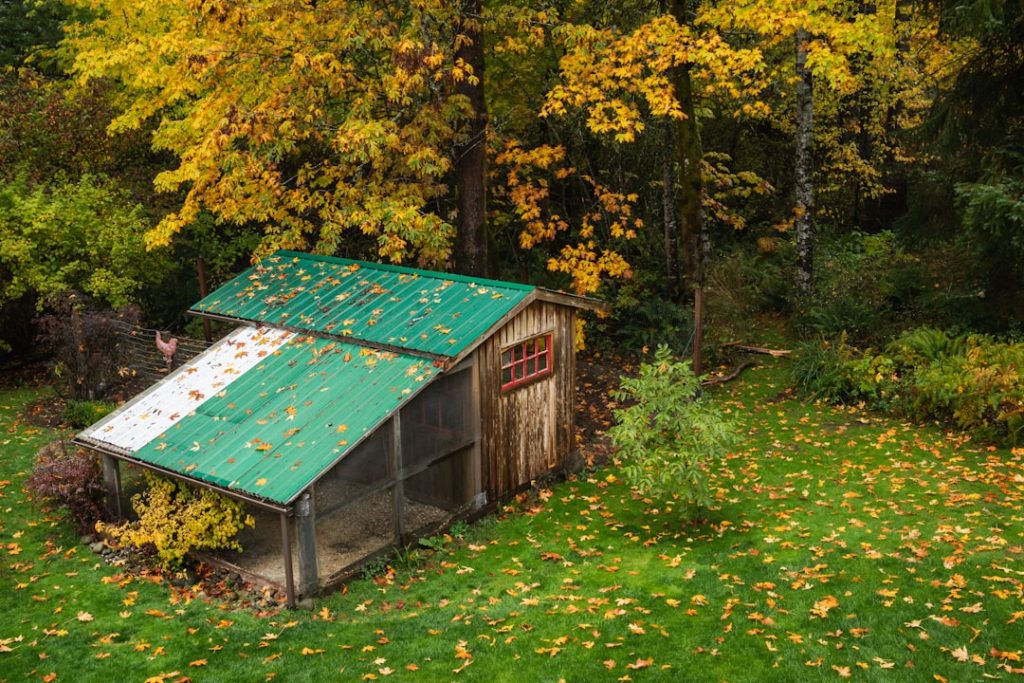Keeping chickens dry during rainy weather is essential for their health and well-being. Wet feathers can lead to hypothermia, which can be fatal for chickens. Damp conditions also create an environment conducive to bacteria and mold growth, potentially causing respiratory issues and other health problems.
Chickens are not naturally equipped to handle wet conditions, as their feathers are designed for insulation and protection from the elements. Therefore, proactive measures are necessary to keep chickens dry during rainy periods to ensure their overall health and comfort. Wet conditions can also lead to an increase in parasites such as mites and lice, which cause discomfort and stress for chickens.
These parasites thrive in damp environments and can quickly infest a flock if proper measures are not taken. In addition to physical discomfort, damp conditions can lead to decreased egg production and overall flock productivity. Understanding the importance of keeping chickens dry in the rain is crucial for maintaining a healthy and thriving flock.
Table of Contents
- 1 Providing adequate shelter for chickens during rainy weather
- 2 Ensuring proper drainage in the chicken coop and run
- 3 Using water-resistant bedding and materials in the coop
- 4 Implementing a feeding and watering system that minimizes exposure to rain
- 5 Monitoring and managing the health of chickens during rainy periods
- 6 Tips for maintaining a dry and comfortable environment for chickens in the rain
- 7 FAQs
- 7.1 What are some ways to keep chickens dry in the rain?
- 7.2 Why is it important to keep chickens dry in the rain?
- 7.3 How can I provide a covered area for my chickens to seek shelter in the rain?
- 7.4 What type of bedding should I use in my chicken coop to keep them dry in the rain?
- 7.5 How can I ensure my chickens’ feathers are healthy and well-maintained to keep them dry in the rain?
Key Takeaways
- Keeping chickens dry in the rain is crucial for their health and well-being
- Adequate shelter is essential to protect chickens from getting wet during rainy weather
- Proper drainage in the chicken coop and run helps prevent water accumulation and dampness
- Using water-resistant bedding and materials in the coop helps maintain a dry environment
- Implementing a feeding and watering system that minimizes exposure to rain reduces the risk of wet feed and water for chickens
Providing adequate shelter for chickens during rainy weather
The Importance of a Well-Built Coop
One of the most critical aspects of keeping chickens dry during rainy weather is providing adequate shelter. This includes a well-built and properly maintained coop that offers protection from the rain and wind. The coop should be designed to keep out moisture and provide a dry and comfortable environment for the chickens.
Ventilation and Additional Shelter
Additionally, it’s important to ensure that the coop is well-ventilated to prevent the buildup of humidity, which can lead to damp conditions inside the coop. In addition to the coop, it’s also essential to provide shelter in the chicken run to allow the birds to seek refuge from the rain. This can include covered areas or shelters within the run where the chickens can stay dry while still having access to fresh air and outdoor space.
Regular Maintenance and Inspection
Providing adequate shelter for chickens during rainy weather is essential for their overall well-being and comfort. It’s important to regularly inspect and maintain the shelter to ensure that it remains watertight and provides a dry environment for the chickens, especially during periods of heavy rain.
Ensuring proper drainage in the chicken coop and run

Proper drainage is essential for maintaining a dry environment for chickens during rainy periods. This includes ensuring that water does not accumulate inside the coop or run, which can lead to damp conditions and potential health issues for the birds. It’s important to regularly inspect the coop and run for any signs of water accumulation and take proactive measures to address any drainage issues.
In the coop, this can include ensuring that the floor is sloped to allow water to drain away from the living area. Additionally, it’s important to regularly clean and replace bedding to prevent moisture buildup and maintain a dry environment for the chickens. In the run, it’s important to ensure that the ground is properly graded to allow water to drain away from the area where the chickens spend their time.
This can help prevent mud and standing water, which can lead to damp conditions and potential health issues for the birds.
Using water-resistant bedding and materials in the coop
Using water-resistant bedding and materials in the coop is essential for maintaining a dry environment for chickens during rainy periods. This includes using materials such as straw or wood shavings that are able to absorb moisture and provide a dry surface for the chickens to rest on. Additionally, it’s important to regularly inspect and replace bedding as needed to prevent moisture buildup and maintain a dry environment inside the coop.
In addition to bedding, it’s also important to use water-resistant materials in the construction of the coop itself. This includes using materials such as treated wood or metal roofing that are able to withstand exposure to rain and moisture. Proper insulation can also help prevent condensation inside the coop, which can lead to damp conditions and potential health issues for the birds.
Using water-resistant bedding and materials in the coop is essential for maintaining a dry and comfortable environment for chickens during rainy periods.
Implementing a feeding and watering system that minimizes exposure to rain
Implementing a feeding and watering system that minimizes exposure to rain is essential for keeping chickens dry during rainy weather. This includes providing covered feeders and waterers inside the coop or run to prevent food and water from becoming wet and contaminated during periods of heavy rain. Additionally, it’s important to regularly inspect and clean feeders and waterers to prevent mold and bacteria from developing in damp conditions.
In addition to providing covered feeders and waterers, it’s also important to ensure that there are ample feeding and watering stations available for all of the chickens in the flock. This can help prevent overcrowding and competition for food and water, which can lead to stress and potential health issues for the birds. Implementing a feeding and watering system that minimizes exposure to rain is essential for maintaining a dry environment for chickens during rainy periods.
Monitoring and managing the health of chickens during rainy periods

Health Checks and Prevention Measures
Regular inspections of the birds are crucial to identify any signs of illness or discomfort, such as respiratory issues or parasite infestations. Providing supplemental heat inside the coop during periods of heavy rain can help prevent hypothermia in the birds.
Environmental Management
In addition to monitoring their health, it’s also important to manage their environment by taking proactive measures to keep them dry and comfortable. This includes regularly cleaning and maintaining the coop and run, as well as providing ample ventilation to prevent humidity buildup.
Providing Opportunities for Dust Bathing
Providing opportunities for the birds to dust bathe can help keep their feathers clean and dry during rainy periods. This is an essential aspect of maintaining a healthy and thriving flock.
Maintaining a Healthy Flock
Monitoring and managing the health of chickens during rainy periods is essential for maintaining a healthy and thriving flock. By taking these proactive measures, you can help prevent health issues and ensure the well-being of your chickens.
Tips for maintaining a dry and comfortable environment for chickens in the rain
In addition to the aforementioned measures, there are several tips for maintaining a dry and comfortable environment for chickens in the rain. This includes providing ample space inside the coop or run for the birds to seek refuge from the rain, as well as ensuring that there are no leaks or drafts that could lead to damp conditions inside the living area. Additionally, it’s important to regularly inspect and maintain gutters and downspouts on any structures near the coop or run to prevent water from accumulating in these areas.
Furthermore, it’s important to provide ample ventilation inside the coop while still protecting the birds from drafts. This can help prevent humidity buildup and maintain a dry environment inside the living area. Additionally, providing ample roosting space inside the coop can help keep the birds off of damp surfaces and provide a dry place for them to rest during rainy periods.
By implementing these tips, you can help maintain a dry and comfortable environment for your chickens during rainy weather. In conclusion, keeping chickens dry during rainy weather is essential for their overall health and well-being. By providing adequate shelter, ensuring proper drainage, using water-resistant bedding and materials, implementing a feeding and watering system that minimizes exposure to rain, monitoring and managing their health, and following tips for maintaining a dry environment, you can help ensure that your flock remains healthy and comfortable during rainy periods.
It’s important to take proactive measures to keep chickens dry in order to prevent potential health issues that can arise from damp conditions. By understanding the importance of keeping chickens dry in the rain and taking proactive measures to maintain a dry environment, you can help ensure that your flock remains healthy and thriving regardless of the weather conditions.
If you’re looking for more tips on keeping your chickens comfortable in their coop, check out this article on how to create a chicken coop trampoline. This innovative idea can help keep your chickens dry and comfortable during rainy weather, providing them with a dry and elevated surface to rest on.
FAQs
What are some ways to keep chickens dry in the rain?
Some ways to keep chickens dry in the rain include providing a covered area for them to seek shelter, using waterproof bedding in their coop, and ensuring their feathers are healthy and well-maintained.
Why is it important to keep chickens dry in the rain?
It is important to keep chickens dry in the rain to prevent them from getting sick, developing respiratory issues, and to maintain their overall health and well-being.
How can I provide a covered area for my chickens to seek shelter in the rain?
You can provide a covered area for your chickens by building a simple roof over part of their outdoor run or by using tarps or other waterproof materials to create a sheltered space for them.
What type of bedding should I use in my chicken coop to keep them dry in the rain?
Using straw or wood shavings as bedding in the chicken coop can help keep the chickens dry in the rain, as these materials are absorbent and can provide a dry surface for the chickens to rest on.
How can I ensure my chickens’ feathers are healthy and well-maintained to keep them dry in the rain?
You can ensure your chickens’ feathers are healthy and well-maintained by providing a balanced diet, regular grooming, and access to dust baths, which can help keep their feathers clean and in good condition.
Meet Walter, the feathered-friend fanatic of Florida! Nestled in the sunshine state, Walter struts through life with his feathered companions, clucking his way to happiness. With a coop that’s fancier than a five-star hotel, he’s the Don Juan of the chicken world. When he’s not teaching his hens to do the cha-cha, you’ll find him in a heated debate with his prized rooster, Sir Clucks-a-Lot. Walter’s poultry passion is no yolk; he’s the sunny-side-up guy you never knew you needed in your flock of friends!







